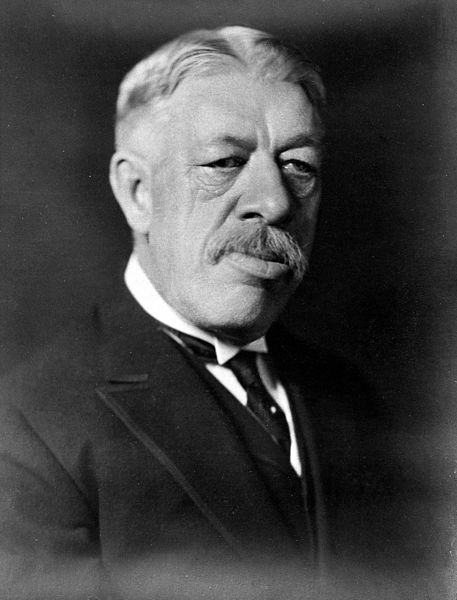
Dr. William Coley. Not a brain surgeon.
With apologies to my colleagues, but infectious diseases really is the most interesting specialty in medicine. There are innumerable interesting associations and interactions of infectious diseases in medicine, history, art, science, and, well, life, the universe and everything. ID is so 42.
A recent email led me to wander the numerous interactions between infections and cancer.
There are the cancers that are caused by infection. HPV and cervical and throat cancer. EBV and lymphoma. HHV8 and Kaposi’s Sarcoma. I certainly hope I am not reincarnated as a Tasmanian Devil.
There are the less clear cut causations/ associations, like toxigenic Bacteroides fragilis and bowel cancer or a scar carcinoma in tuberculosis. It is an interesting area of research but still unsettled.
Cancers and infections
Some cancers lead to infections. Bowel cancer makes a matrix not made by normal cells that allows the preferential adherence of Streptococcus gallolyticus, then bacteremia and endocarditis. If you see a patient dying of Clostridium septicum sepsis, they likely have an underlying bowel cancer.
And on and on. ID is all about knowing these odd associations.
But it gets odder.
Infections and cancers
There has long been a peculiar association between having an acute infection and having cancer going into remission. There are numerous case reports of cancer regression after bacterial, fungal, viral, and protozoal infections.
Why? Maybe some tumors are temperature sensitive and die at higher temperature:
Preclinical and clinical studies have shown for decades that tumor cells demonstrate significantly enhanced sensitivity to “fever range” hyperthermia (increasing the intratumoral temperature to 42–45°C) than normal cells, although it is unknown why cancer cells exhibit this distinctive susceptibility.
Fever is mediated in part by the cytokine TNF, aka tumor necrosis factor.
It is a curiosity that was recognized for centuries but first used clinically in the late 1800s by Dr. William Coley, who actually injected live Streptococci and other bacterial products into patients and saw a regression of primarily bone and soft tissue tumors. Infection of live bacteria into patients is not such a great idea, especially in the pre-antibiotic era, so he used killed Streptococci and Serratia with similar results.
Use of toxins and bacteria has become passé for the treatment of cancer, but hyperthermia is still an area of active research in cancer treatment, as is using bacteria to kill tumors. GMO Clostrida spp for example, have been infected into animal tumors with good results.
It is an intervention prone to hype and some curious practices. What a surprise.
Infectious disease (thankfully) isn’t brain surgery
A pair of neurosurgeons at UC Davis had to quit after they infected brain tumor patients with bowel bacteria, one of whom died of sepsis. They used Enterobacter aerogenes, a reasonably hard organism to kill, and reinforces why saying something isn’t brain surgery is, from an internist’s perspective, not really saying it is all that difficult. Neurosurgeons operate on brains but it doesn’t follow that theirs is particularly high functioning.
And there is a case that I remember but cannot find (false memory?) of a lab tech who tried to cure his own cancer (lymphoma?) by injecting E. coli (?) into his bloodstream. It did not affect the cancer but he did get septic and almost died. I probably should delete the prior sentence but I am hoping one of my readers with better Google-Fu than I can find the reference.
Of course the pseudo-medicine world takes advantage of this curiosity by offering saunas and other forms of heat as cancer treatment, assuming that all cancers are susceptible to increased temperature. Often heat is combined with other pseudo-medicines with the expected results. From what I can tell from the web, it is promulgated more in Europe that in the US as a cancer cure.
Most of the cancer patients I see have fevers, often from infection, and neither the infection nor the fever is all that salubrious. For some cancers fever is a presenting sign, such as the classic Pel-Ebstein fever of lymphoma, doing the malignancy little if any harm. Fever as a cancer treatment is interesting phenomena but not the be all and end all of cancer therapy.
Cancer, childhood infections, and disease
And then there is the literature that suggests childhood infections, especially the vaccine preventable infections, prevent adult cancers.
It is a most unimpressive literature fraught with methodological bias, the most important being relying on memory and questionnaires for past infections.
One study notes:
A history of common colds or gastroenteric influenza prior to the interview was found to be associated with a decreased cancer risk…There was no apparent relationship between childhood infections or other diseases reported in the earlier history, and cancer risk.
To which I say, what the hell is gastroenteric influenza?
“Febrile infectious childhood diseases in the history of cancer patients and matched controls,” published in Medical Hypotheses, found in patients in an Anthroposophic medical practice, a decrease in cancers associated with measles, mumps, rubella, pertussis, scarlet-fever and chickenpox as a child. Another study suggests an association between measles and a decreased risk of lymphoma.
There are variable results when looking for an association:
In this pre-vaccination cohort, childhood infection with measles and influenza were associated with a reduced risk of death from cancer in adulthood, while pertussis was associated with an increased risk.
Others find no, or worse associations:
We could not confirm the results of former studies which assumed a preventive effect of childhood diseases and fever on the cancer risk. On the contrary, on the basis of this investigation one might postulate a 2- to 3-fold rise of the cancer risk by mumps or whooping cough.
Or:
These results offer little support for either a protective effect of enhanced immune surveillance or a harmful effect from antigenic stimulation in relation to risk for acute leukemia in adults
Although doing phone interviews may have increased the risk of brain tumor (sarcasm).
It is a curious literature but nowhere near robust enough to draw a conclusion. You know the old skeptical saw, association is not causation. And one would have to wonder how these infections, each involving different pathophysiologies in the primary disease, could have an effect on so many different tumors of such radically different origins so many years later.
From a causal perspective and the wide variations in effect it seems more noise than real. As one author noted:
However, the associations between cancer risk and childhood infectious diseases are intriguing.
But has I have learned in the last 35 years, most intriguing ideas are not valid upon further testing.
As an excuse to avoid childhood vaccinations, the literature is not convincing. The known mortality and morbidity of vaccine-preventable illnesses far outweigh the maybe of cancer prevention.
And if worried about future cancer, I would assume the HPV vaccine would be high on such a todo list.

